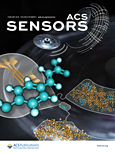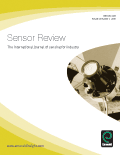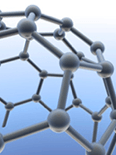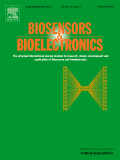
ACS Sensors
Scope & Guideline
Advancing the frontiers of sensor technology.
Introduction
Aims and Scopes
- Development of Novel Sensing Materials:
Research focusing on the synthesis and characterization of new materials, such as metal-organic frameworks (MOFs), nanomaterials, and polymers, that enhance the sensitivity and selectivity of sensors. - Integration of Advanced Technologies:
Incorporation of cutting-edge technologies like machine learning, artificial intelligence, and microfluidics into sensor design to improve functionality and performance. - Multimodal and Multiplexed Sensing:
Development of sensors capable of detecting multiple analytes simultaneously, allowing for comprehensive monitoring of biological and environmental samples. - Wearable and Point-of-Care Sensors:
Focus on the design and implementation of portable, user-friendly sensors for real-time monitoring of health parameters, emphasizing their accessibility and ease of use in clinical and home settings. - Environmental and Safety Monitoring:
Research aimed at developing sensors for detecting pollutants, toxins, and pathogens in various environments, ensuring safety and compliance with health regulations.
Trending and Emerging
- Machine Learning and AI Integration:
There is a significant increase in papers exploring the application of machine learning and artificial intelligence techniques to optimize sensor performance, data analysis, and predictive modeling. - Biomolecule and Disease Detection:
A growing trend is evident in the development of sensors for detecting specific biomolecules related to diseases, underscoring the importance of early diagnosis and personalized medicine. - Sustainable and Green Sensing Technologies:
Research focusing on environmentally friendly materials and methods for sensor fabrication is on the rise, reflecting a broader commitment to sustainability in scientific research. - Wearable and Smart Sensors:
The rise of wearable technology is reflected in an increasing number of publications addressing smart sensors designed for health monitoring and personal wellness, indicating a shift towards practical, user-centric applications. - Nanomaterial-Enhanced Sensing:
There is an ongoing focus on incorporating nanomaterials into sensor designs to enhance sensitivity, selectivity, and functionality, marking a significant advancement in sensor technology.
Declining or Waning
- Traditional Electrochemical Sensors:
While still relevant, the emphasis on conventional electrochemical sensors has decreased as researchers increasingly adopt more innovative approaches such as nanomaterials and integrated systems. - Single-Function Sensors:
There is a noticeable decline in the publication of studies centered on sensors designed for a single analyte detection, as the trend shifts towards developing multifunctional or multiplexed sensing systems. - Basic Sensing Mechanisms:
Research focusing solely on the fundamental principles of sensor operation, without application-based insights, has become less prominent as the community seeks more applied research that addresses real-world problems.
Similar Journals

Optoelectronics Letters
Bridging Research and Application in OptoelectronicsOptoelectronics Letters, published by Tianjin University of Technology, is an esteemed platform for the dissemination of innovative research within the fields of atomic and molecular physics, optics, condensed matter physics, and electrical engineering. With its inaugural publication in 2007 and a convergence period extending to 2024, this journal aims to foster scholarly communication and collaboration among researchers and professionals. Although currently lacking an impact factor, it serves a vital niche in the rapidly evolving field of optoelectronics, evidenced by its categorization in the fourth quartile for various physics disciplines and the third quartile in electrical and electronic engineering. Given its ranking dynamics in Scopus, it is an emerging choice for authors seeking to convey their findings on electronic, optical, and magnetic materials. Researchers, students, and industry professionals alike can benefit from its open access options, encouraging a broad dissemination of cutting-edge knowledge that is essential in the advancement of technology and materials science.

Journal of Sensors and Sensor Systems
Pioneering Innovations in Sensor TechnologyThe Journal of Sensors and Sensor Systems, published by COPERNICUS GESELLSCHAFT MBH, is a prominent open-access journal that has been contributing to the fields of electrical and electronic engineering and instrumentation since its inception in 2012. With an ISSN of 2194-8771 and an E-ISSN of 2194-878X, this journal provides a critical platform for researchers, professionals, and students to disseminate innovative findings and advancements in sensor technology and system applications. As of 2023, it holds a respectable ranking in the third quartile for Electrical and Electronic Engineering and in the fourth quartile for Instrumentation, as per Scopus classifications. The journal is based in Göttingen, Germany, and emphasizes the importance of open access for broad dissemination of knowledge. By fostering interdisciplinary research and collaboration, The Journal of Sensors and Sensor Systems plays an essential role in advancing sensor technologies, ultimately driving progress in various scientific and engineering domains.

Sensor Review
Connecting Researchers with Cutting-Edge DevelopmentsSensor Review, an esteemed journal within the fields of Electrical and Electronic Engineering as well as Industrial and Manufacturing Engineering, is published by EMERALD GROUP PUBLISHING LTD. With an ISSN of 0260-2288 and an E-ISSN of 1758-6828, this journal has been a crucial resource since its inception in 1981, now extending its coverage to 2024. Although currently classified as Q4 in Electrical and Electronic Engineering and Q3 in Industrial and Manufacturing Engineering for 2023, the journal is recognized for its significant contributions to sensor technology and applications, catering to both theoretical and practical dimensions of the field. Researchers and professionals engaged in sensor innovation and application will find Sensor Review an essential platform for disseminating cutting-edge research and fostering academic dialogue. While it does not offer open access, the journal's rigorous peer-review process and respectability in the academia ensure that published articles meet high scholarly standards. The journal’s impact is further reflected in its Scopus rankings, establishing it as a noteworthy publication among its peers.

CHINESE JOURNAL OF ANALYTICAL CHEMISTRY
Connecting Minds in the World of Analytical ChemistryCHINESE JOURNAL OF ANALYTICAL CHEMISTRY, published by SCIENCE PRESS in China, stands as a prominent platform in the field of analytical chemistry since its inception in 1989. With its ISSN 0253-3820 and E-ISSN 1872-2040, the journal maintains a vital role in disseminating empirical research and innovative methodologies, contributing to the advancement of analytical techniques and their applications. The 2023 Scopus ranking positions the journal in the third quartile (Q3) within its category, reflecting a respectable standing among its peers. Researchers, professionals, and students alike engage with a broad range of topics, from instrumental analysis to environmental monitoring, each aiming to foster further scientific inquiry. Although it does not currently offer Open Access, the journal's rich repository of knowledge continues to be an essential resource for those in the analytical chemistry community, with an enduring commitment to scientific excellence and collaboration.

ChemNanoMat
Empowering Researchers to Shape Tomorrow's InnovationsChemNanoMat is a prestigious academic journal published by WILEY-V C H VERLAG GMBH, dedicated to the rapidly evolving fields of nanoscale materials and their applications in diverse areas such as biomaterials, energy engineering, and environmental sustainability. With the journal's ISSN 2199-692X and recognized quality, as evidenced by its Q2 rankings across multiple categories—including Biomaterials and Renewable Energy—ChemNanoMat serves as a crucial platform for researchers, professionals, and students to disseminate their findings and foster collaborations. Operating from Germany, the journal encourages the exploration of innovative materials solutions to meet tomorrow's challenges. While it does not currently offer open access options, it remains highly regarded in the academic community with a competitive impact factor that emphasizes its relevance and influence in guiding future research directions. Covering a broad scope from 2015 through 2024, ChemNanoMat is key for anyone invested in the advancement of materials chemistry and related scientific fields.

ANALYTICAL AND BIOANALYTICAL CHEMISTRY
Advancing the Frontiers of Chemical AnalysisANALYTICAL AND BIOANALYTICAL CHEMISTRY, published by SPRINGER HEIDELBERG, is a leading international journal that serves as a vital platform for innovative research in the fields of analytical and bioanalytical chemistry. With an impressive impact factor and ranking in the Q2 category for both Analytical Chemistry and Biochemistry, the journal highlights key advancements and methodologies that drive the discipline forward. Established in 1996 and continuing vigorously into 2024, it has gained significant recognition with Scopus rankings placing it in the 83rd and 78th percentiles within its categories, underscoring its impact and relevance. The journal's commitment to open access facilitates widespread dissemination of critical scientific knowledge, making it an essential resource for researchers, professionals, and students dedicated to exploring the complexities of chemical analysis. With its base in Heidelberg, Germany, ANALYTICAL AND BIOANALYTICAL CHEMISTRY continues to inspire and influence the global research community.

Annual Review of Analytical Chemistry
Navigating the Landscape of Analytical AdvancementsAnnual Review of Analytical Chemistry, published by Annual Reviews, is a premier journal that serves as a critical resource in the field of analytical chemistry, providing comprehensive and cutting-edge reviews that synthesize recent advancements and pivotal research findings. With an impressive impact factor and ranked Q1 in both Analytical Chemistry and Miscellaneous Medicine, it stands as a leader in disseminating knowledge that spans the intricacies of chemical analysis, enhancing the scientific discourse within the community. Available in both print (ISSN: 1936-1327) and online (E-ISSN: 1936-1335), the journal is accessible to a wide audience, fostering innovation and collaboration among researchers, professionals, and students alike. Its scope includes the converged years from 2008 to 2024, showcasing its commitment to providing relevant and timely insights that impact practice and education in analytical techniques, methodologies, and applications. The Scopus rank of #6 out of 156 in Analytical Chemistry, placing it in the 96th percentile, underscores its significance and the high regard in which it is held. As you explore the journal's offerings, you will find a wealth of knowledge that not only informs but inspires future discoveries in the realm of analytical chemistry.

SENSORS
Shaping the future of analytical and engineering solutions.SENSORS is a leading peer-reviewed open-access journal published by MDPI, dedicated to the field of sensor technology and its applications. Established in 2001 and located in Basel, Switzerland, this journal plays a pivotal role in disseminating groundbreaking research encompassing various disciplines, including Analytical Chemistry, Physics, Engineering, and Biochemistry. With a distinguished 2023 Scopus ranking that places it in Q1 across multiple categories and a commendable impact factor reflective of its high-quality contributions, SENSORS has cemented its status as an essential resource for researchers and professionals alike. The journal is committed to facilitating knowledge exchange in cutting-edge sensor technologies, fostering advancement in areas such as instrumentation, medical applications, and electronic engineering. The convenient open-access model ensures that research findings are readily accessible to a global audience, promoting collaboration and innovation within the scientific community. For all those interested in probing the depths of this dynamic field, SENSORS provides a rich repository of research that not only informs but inspires future explorations.

BIOSENSORS & BIOELECTRONICS
Empowering Scientific Dialogue in Biomedical EngineeringBIOSENSORS & BIOELECTRONICS, published by Elsevier Advanced Technology, is at the forefront of research and innovation in the realms of biomedical engineering, biophysics, and biotechnology. Established in 1990, this esteemed journal has established itself as a premier platform, receiving a prestigious Q1 ranking across multiple categories, including Electrochemistry and Nanoscience, reflecting its critical impact on advancing scientific knowledge and technology. With an impressive range of topics, including the latest trends in biosensor development and bioelectronic application, it serves as an invaluable resource for researchers, professionals, and students alike, facilitating collaborative dialogue and innovative solutions. Though primarily subscription-based, the journal is accessible from its UK headquarters in Oxford, promising rigorous peer-reviewed articles that inform future trends and applications in this dynamic field.

Geoscientific Instrumentation Methods and Data Systems
Unlocking New Frontiers in Geoscience Methodologies and TechnologiesGeoscientific Instrumentation Methods and Data Systems, published by COPERNICUS GESELLSCHAFT MBH, is a distinguished open-access journal dedicated to the dissemination of innovative methodologies, advanced instrumentation, and comprehensive data systems in the earth sciences. With an ISSN of 2193-0856 and an E-ISSN of 2193-0864, this journal has been paving the way for insightful research since its inception in 2012. Based in Germany, it serves a global audience interested in atmospheric science, geology, and oceanography, reflected in its impressive Scopus rankings and recent categorizations as Q2 and Q3 in these vital fields. The journal’s mission is to foster interdisciplinary collaboration and facilitate knowledge exchange, providing a platform for researchers and professionals to share significant advancements and challenge the frontiers of geoscientific instrumentation and methods. As an open-access journal, it ensures that pivotal research findings are accessible to a wider audience, promoting inclusivity and rapid dissemination of knowledge critical to addressing global challenges in earth and planetary sciences.